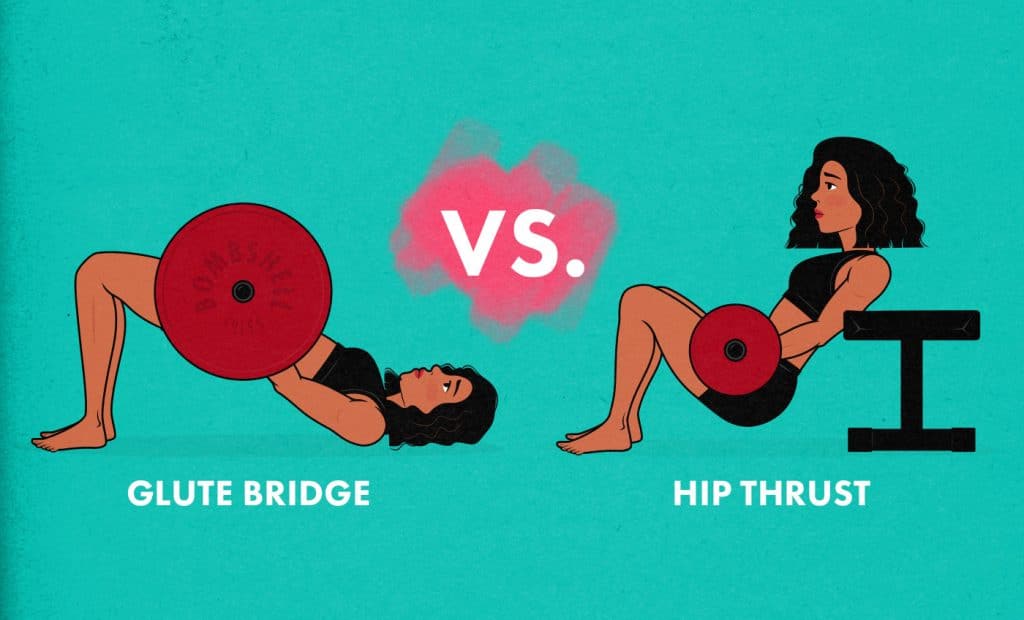
Glute Bridge vs Hip Thrust
Almost every woman we’ve worked with has wanted to improve their butt, and they can do that by doing some compound exercises that hit the glutes (squats, Romanian deadlifts, etc.). But for optimal muscle growth, they’ll also want to do some isolation exercises for the glutes.
So how does the glute bridge exercise compare to a hip thrust? Is one lift better than the other? Let’s take a look.
Key Differences Between The Glute Bridge & Hip Thrust
Both the glute bridge and hip thrust are isolation exercises for the glutes. By exercising the glutes, you cause mechanical stress on the muscle fibres, causing them to adapt bigger, rounder, and curvier. Doing exercises for your glutes is key for improving your hip measurements (which improves your waist-to-hip ratio). Here’s Marco, a Bony to Bombshell co-founder, showing the differences between the lifts with his adjustable dumbbell.
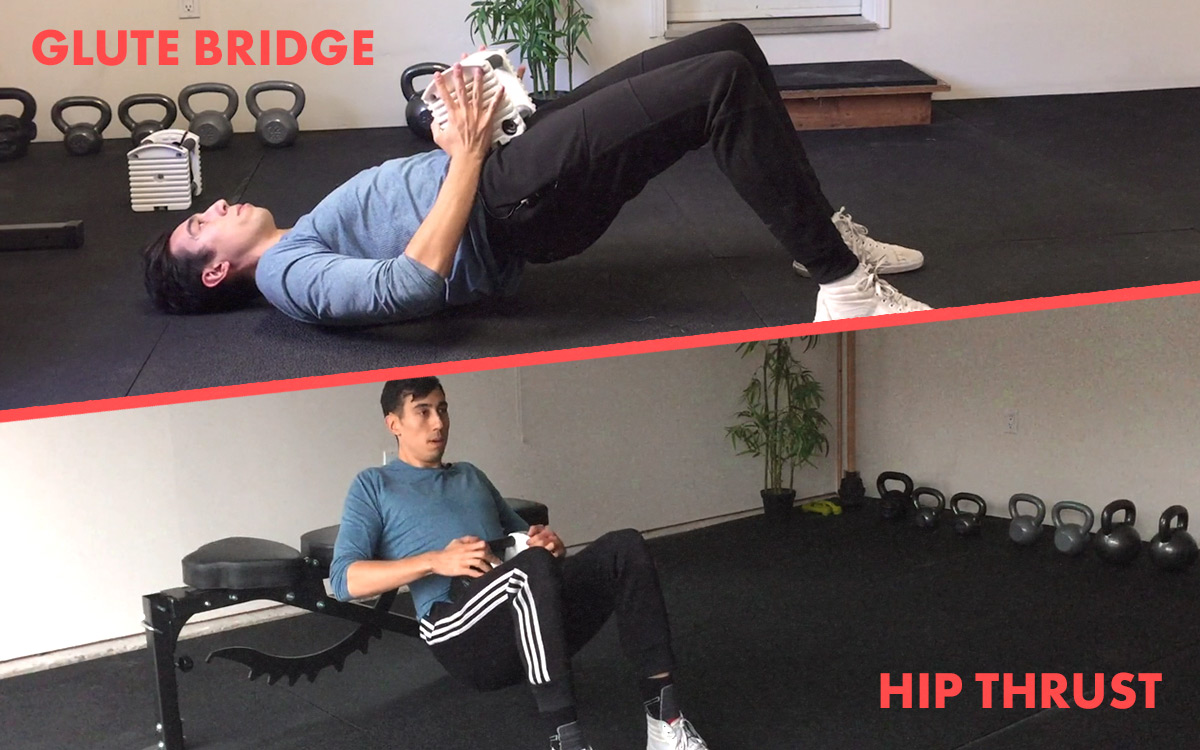
The exercise looks pretty similar, but the hip thrust starts off with the shoulders on a bench, while the glute bridge is done while lying down on the floor.
Range Of Motion
In general, a larger range of motion will stretch muscle fibres more, allowing them to get a better growth stimulus. A larger range of motion is superior not just for muscle growth but for muscle shape. This is because the muscle fibres with a fuller range of motion will look more athletic in shape because they are more athletic. They’ve been trained to be stronger in a larger motion. So, for example, when squatting, it’ll be better to use less weight but squat more deeply.
Now back to the topic at hand—the glute bridge has less range of motion compared to the hip thrust. So the glute bridge is worse because it has a smaller range of motion? Right?
Not so fast. Because the glute bridge has less range of motion, it’s also removing the range where the hamstrings start to turn on more and take over. So if your hamstrings are already getting a lot of love, or they’re dwarfing your glutes, and you are hoping to isolate your glutes a bit more, the reduced range of motion from the glute bridge might be a good thing.
On top of that, because the range is smaller, the glute bridge can be loaded up much heavier. This means that not only will you be isolating the glutes more, but you’ll be able to stress them even better since the weights are heavier.
It’s pretty common for our female members (in the Bony to Bombshell program) to be glute bridging over 300 pounds after just a couple of months of lifting, allowing them to add inches to their hips in just a few weeks. And most of these women were total beginners who had never even set foot in a gym before!
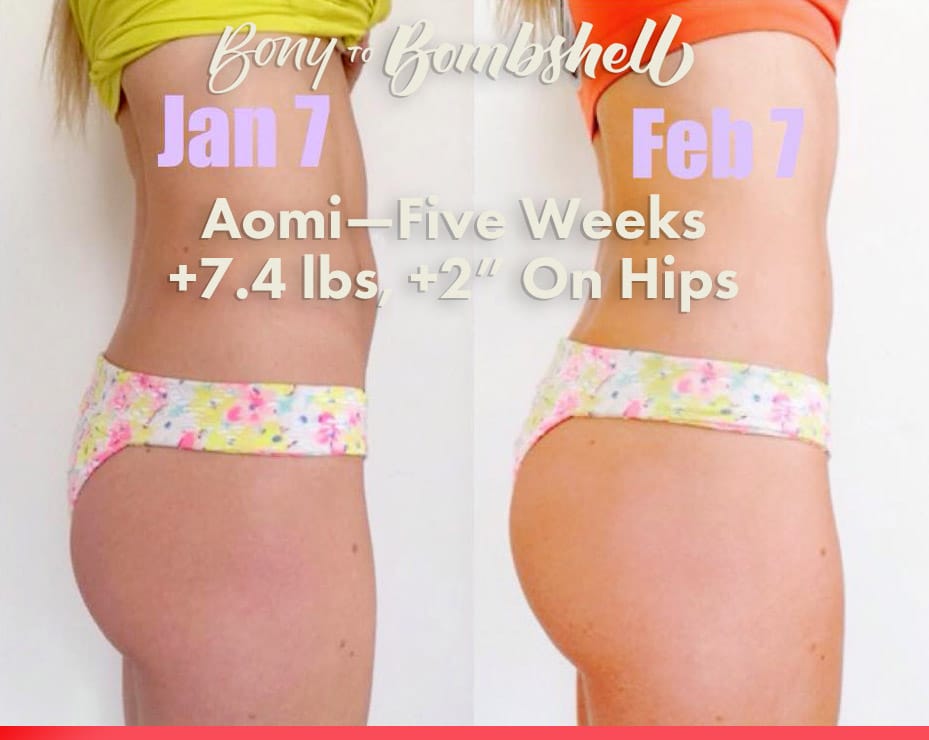
I can’t imagine any of our Bombshell members hip-thrusting 300+ pounds. It would be too hard on the back, the core, etc. So because the glute bridge has less range, you can isolate the glutes more and lift heavier with fewer reps, further overloading those glutes for even more butt growth.
On the flip side, because the hip thrust is a larger range of motion, it does hit different muscle fibres in both the glutes and the back of the legs. This can help the full leg look more athletic (and balanced) because it is getting stronger as a complete unit.
Targeted Muscles
Both lifts try to isolate the glute muscles, particularly the gluteus maximus, by exercising the hip motion where the pelvis thrusts forward.
But the hip thrust has a bit more range of motion, so it can hit the hamstrings at the same time. It’s also a bit more demanding on the core due to its more dynamic movement.
Equipment Required
Barbell Glute Bridge Equipment
- Olympic barbell
- Olympic plates
- Barbell collars
- Barbell pad for your hips
Barbell Hip Thrust Equipment
- Olympic barbell
- Olympic plates
- Barbell collars
- Barbell pad for your hips
- Bench (and some way to make it immovable)
As you can see, the hip thrust will require one more piece of equipment—a bench for resting your back to rest on.
You’ll also need to find a way to make that bench locked down so it doesn’t slide around. At my old gym, we used to just push it against the wall, so it wouldn’t budge. But this sliding problem is also why some specialized equipment has been developed for the hip thrust. But in my experience, most gyms don’t have these hip thrust machines.
If you’re a beginner and just lifting at home, you can do something simple like a dumbbell hip thrust and just use the edge of your couch, and it won’t require any extra equipment.
On the flip side, the glute bridge, because it’s a shorter range of motion, it can require more weight plates to fully take advantage of this lift. If you’re going to a public gym, getting 300+ pounds for your glute bridge (which many of our members are glute bridging after just a couple of months of training) is simple. But if you’ve got a home gym without as much weight, you may find that you outgrow the glute bridge quickly, and the hip thrust may be more effective with less weight.
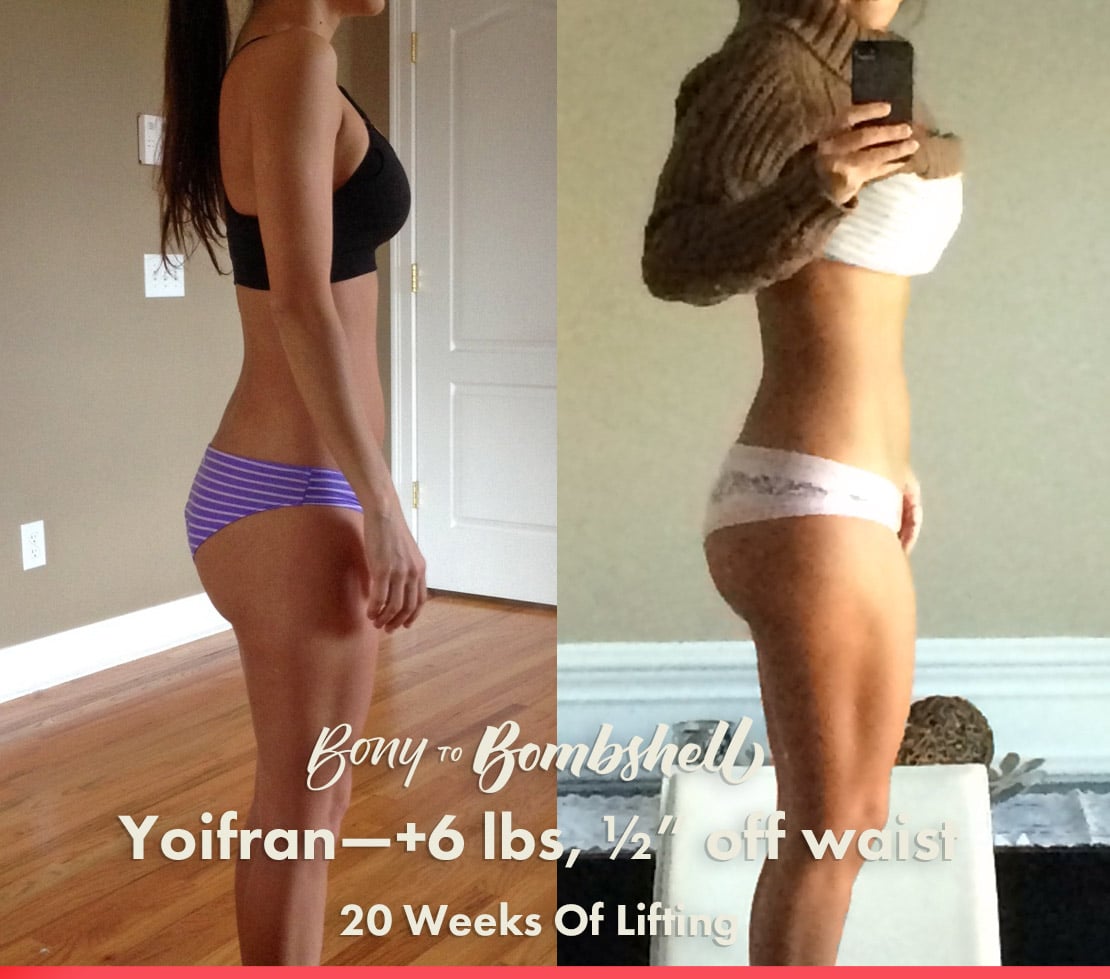
Difficulty Level
The hip thrust requires more skill, that’s for sure. The glute bridge is a dead-simple lift and is more suitable for beginners. So not only can you isolate the glutes more and use heavier weights for growth, but it’s an easier and less injury-prone lift.
The hip thrust requires learning how to brace your core properly and keeping your ribs connected to your pelvis. If you let your pelvis sag down and away from your ribs, you can cause back pain.
Higher rep hip thrusts can also make someone feel dizzy if their head is moving too much as their lower body dips down low and back up again. So some women will try and keep the head stationary to prevent that feeling, but then crinking their necks in the process.
This isn’t to say that you can’t learn the hip thrust. You absolutely can learn it with effort, consistency, and patience. But it does require more skill to master the hip thrust than it does for the glute bridge.
Glute Bridge Pros & Cons
Pros:
- A simple exercise that is great both for beginners and seasoned lifters.
- A reduced range of motion isolates the glutes a bit more.
- A reduced range of motion allows you to lift heavier weights and use a lower rep range, further stimulating the glutes.
- Doesn’t cause dizziness because your head doesn’t move.
- Doesn’t require a bench or extra equipment.
Cons:
- Requires access to more weight to be effectively loaded.
- More weight might mean more barbell pain on the hips, so you might need a better or thicker pad between the barbell and your hips.
- Less range of motion means that the hamstrings won’t get as developed. In lieu of a properly designed program with balance, by just glute bridging, you could potentially develop an odd-looking bubble butt.
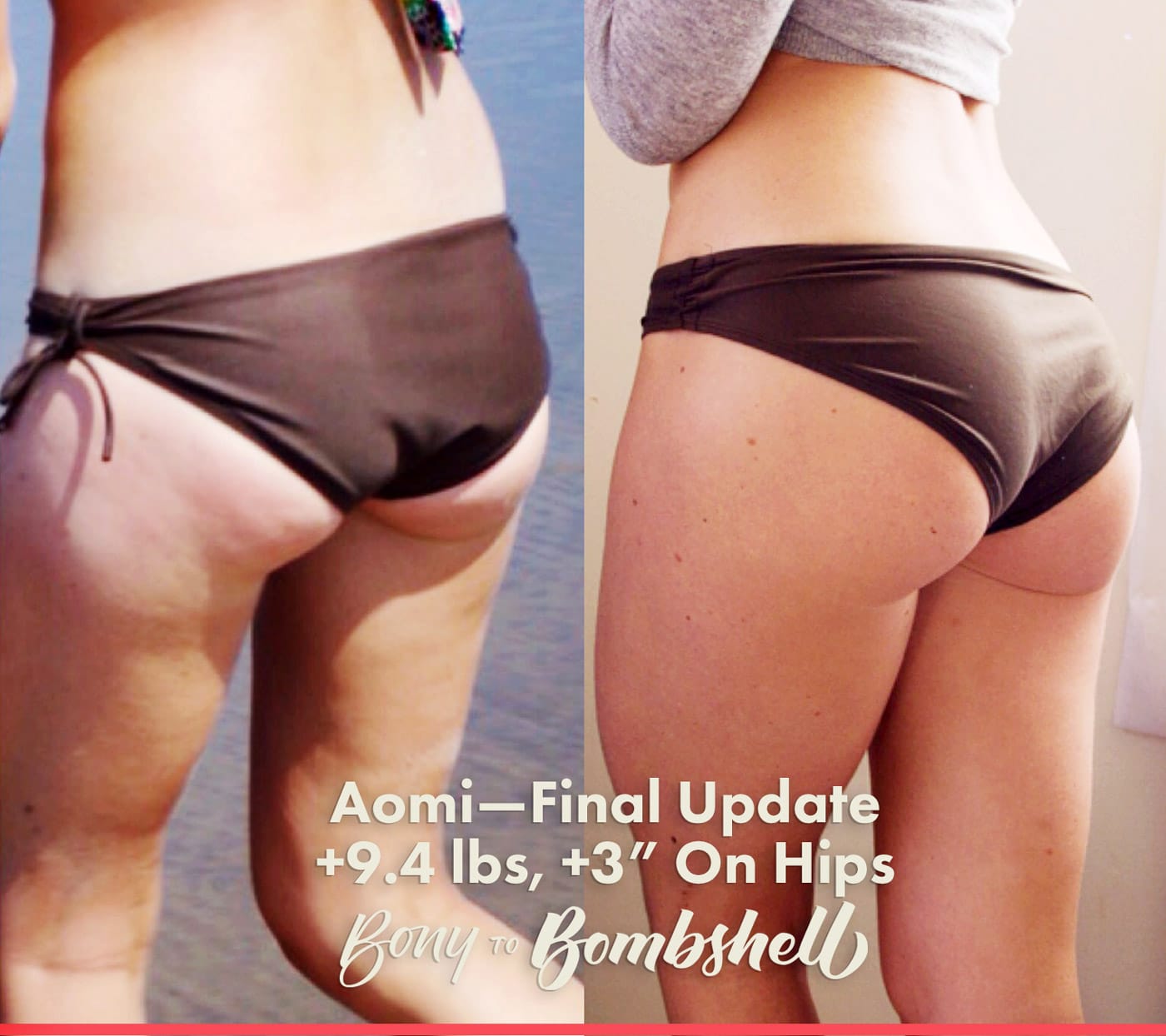
Hip Thrust Pros & Cons
Pros:
- More range of motion allows the hamstrings to jump in, giving them a good workout.
- More range of motion requires less weight to get a good workout in. This is a great option for at home, as you can get started with bodyweight single-leg hip thrusts on the edge of a couch.
- Because it’s a lighter lifter, the weight will cause less pain on the hips.
Cons:
- Harder to set up. Requires a bench and some way to immobilize it or specialty hip thrust equipment.
- Higher skill movement. You need to know about bracing and keeping your ribs and pelvis together.
- Easier to feel dizzy. Your head moves a bit during this movement, and that can make some women feel dizzy unless you bend your neck so it doesn’t move. (If you find the hip thrust makes you dizzy, you might enjoy our article on hip thrust alternatives.)
How To Do Them
Free Glute Workout For Female Beginners
GET THE free GOOGLE SPREADSHEET OF THE
female BEGINNER’S FULL-BODY with glute targeting WORKOUT
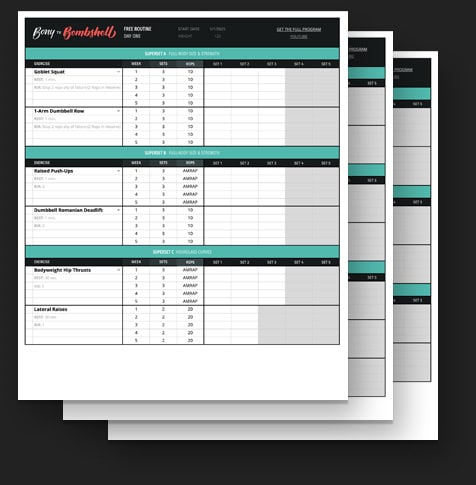
Get the glute targeting workout as a Google spreadsheet. You’ll be able to pick from exercise alternatives, and fill out the sheet.
Plus, we’ll make sure you’re on the Bony to Bombshell newsletter, and send you all of our best women's muscle-building content.
The Glute Bridge Video Demonstration
For a full walk-through, see our glute bridge article.
Glute Bridge Proper Form Breakdown
- Set up the barbell with an appropriate weight or get the dumbbell you’re using and place it next to where you’ll be lying down to do the exercise. If you’re in the gym, a lot of women prefer to set up near a wall, with their feet towards the wall, for more privacy.
- Lay down on your back, bend your knees, and bring your feet up closer to your butt in a comfortable position.
- Roll the barbell up to your hips, and place a pad between the pad and you. Or if you’re using a dumbbell, shimmy the dumbbell onto your lap.
- Take a deep breath in while holding the weight, thrust your pelvis forward and squeeze your glutes.
- Breathe out in a controlled manner as you squeeze and lift.
- Don’t overextend your back. Only go as high as your hips naturally let you.
- Control the weight as you lower your hips back down to the floor.
- As your hips rest on the floor, that completes the rep.
- Do as many reps as it says to do on your workout.
Hip Thrust Video Demonstration
Hip Thrust Proper Form Breakdown
- Set up a bench and make sure it won’t slide around.
- Set up a barbell with weight plates.
- Sit with your back next to the bench, and roll the barbell up to your hips.
- Place a pad between your hips and the barbell.
- Lift the barbell up and get into your starting position.
- Push your whole foot into the ground, and thrust forward with your pelvis.
- As you lower the weight down, think about your body as one piece, with your ribs coming down too.
If you’re at home, you can also do the single-leg hip thrust on the edge of your couch:
The Final Word
For all of these reasons, we program glute bridges at the beginning of our female lifting program as they’ll allow a beginner to get started with confidence, lift heavy weights without a lower risk of injury, and see fast growth in their butt muscles.
Once their coordination has improved, and they want some variety to keep things fresh, the hip thrust is another great tool to add to their arsenal. So we use both exercises, and one isn’t necessarily better than the other. It all depends on the context and your goals. Both lifts are great.
What Next?
If you liked this article, you’d love our muscle-building newsletter. We’ll keep you up to date on all the latest muscle-building information for women. Or, if you want us to walk you through the process of gaining muscle and strength, including teaching you the exercises, giving you a structured 5-month workout program, a complete diet guide, a recipe book, and online coaching/customization, check out our Bony to Bombshell Program.



FREE women's Muscle Growth MINI-COURSE
Get our 5-part female bulking mini-course that covers everything you need to know about:
Here are some related articles